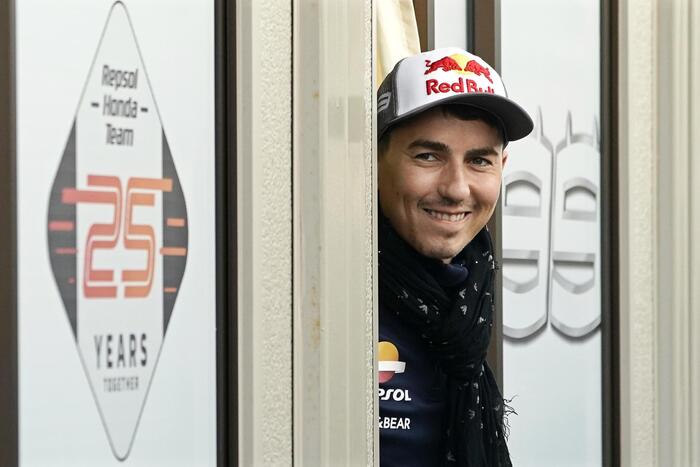When we talk about training methods, it is common to hear terms that we do not know what they specifically refer to and that are used to advertise the activities offered in gyms and sports centers.
If they talk to us about TRX, Pilates, core
training
,
spinning
, Zumba or
Crossfit
, we feel that these words define workouts that are
the best
, procedures by which an enviable shape will be achieved.
And one of the ones that has become more fashionable lately is the one referred to calisthenics.
This training method is used today in the world of
fitness
to refer to the exercises that a person does with their own body, to find a defined and sculpted muscle contour, but without the need to use gym equipment or machinery.
We all remember
The Barceloneta lizard
, who carried out his exercise routine with his own body once the state of alarm was lifted during the covid 19 pandemic. In places like the beaches of Santa Monica or Miami Beach in the United States, the so-called “calisthenics” gather in the bar parks where they carry out their exercise routines.
Where does this name come from, calisthenics?
Its etymology tells us that it comes from the Greek words Kalos (beauty) and Sthenos (strength), and that it has a fairly ancient history.
It is the way that the ancient Greeks had of preparing physically in their gyms, seeking to define their bodies through strength exercises and with their own body mainly as load.
We all know that in those days the fun of exercising was outweighed by the need to prepare for war.
An obvious case is seen in the famous movie
300
,
where King Leonidas and his soldiers showed a terrifying and almost invincible image;
their bodies looked like they had come out of a bodybuilding contest.
In ancient Rome, strength training through calisthenics was used by gladiators.
Its evolution in the Middle Ages during the crusades became a method of force work in the schools of knights as part of their education;
Let us remember that dumbbells, weights, or specific strength training machinery, such as that of modern gyms, had not yet been invented in this period.
The body itself was the burden to handle.
It is not until 1800 when a pioneer of physical education in Sweden, Peter Henry Ling, brings calisthenics back to the fore and highlights the value of free movements of the body as part of his hygienic gymnastics.
It is from this moment when gymnastics pioneers such as the German Jahn promote a natural training of muscular strength (Turnen), which will be the germ of sports gymnastics.
Both from the Swedish School and from the German a gymnastics centered on the mechanics of movement, exercise and calisthenics was defended, with a focus on discipline and mental health.
Along the same lines, calisthenics is linked to improving strength, as can be seen in many of the images in Gerónimo Mercuriale's book on the art of gymnastics that today has evolved into what is known as bodybuilding.
At the beginning of 1900, a more precise and detailed work of calisthenics began to be developed, where it was sought to allow both men, women and children to be physically fit in small outdoor spaces and with devices specially designed for this purpose.
The first manuals and books on calisthenics for women and children appear to be used in the classroom, including music.
These exercises had a military aspect, where the social image required big, strong men and lithe, lithe women.
In this period, calisthenics can be considered as the origin of Olympic gymnastics.
While calisthenics as a women's sport, leads to rhythmic gymnastics in the Olympic Games, based on calisthenics for women, where in countries like Australia the sport of calisthenics continues to exist.
Over the years and the appearance of modern gyms and new training trends, calisthenics was forgotten, although it has reappeared as a form of street training (Street workout) that includes
exercises
using body weight to improve health and fitness.
However, it is not recognized as a federation by the International Olympic Committee (IOC), although there is a private organization, the WSWCF (World Street Workout and Calisthenic Federation) based in Latvia.
It is an activity that does not require excessive financial spending and is practiced mainly in parks, beaches, sports facilities or at home.
It is easy to perform since it requires little or no material (one bar or two parallel bars or rings) and allows you to improve your physical appearance.
It has gained a lot of popularity in recent times, including full-body, aerobic, or targeted exercises on different parts of the body (push-ups, working the triceps on the parallel bars, building muscular endurance, and building skill combinations related to weight loss). gymnastics) that are recommended at any age and condition, being beneficial for improving the quality of life and health.
Likewise, it is considered a good complement for sports training.
In the case of children and adolescents, the proposals focus on low-impact exercises and movements, where attention is focused on routines that can last 15-20 minutes with circuit work (with a warm-up of 5-10 minutes with a light run , displacements, joint mobility and jumps) including stations where you work for 30 seconds at each station, performing 3 series and with 1-minute breaks between series:
Squats or lunges.
Pushups
Swedish bench triceps workout
horizontal/vertical jump
irons
Abdominals (curl up)
In adults, calisthenics focuses on aerobic exercises (running), full body (barbell, burpee, jumping jacks...) or focused on legs (lunge or squats), pushes (arm push-ups), grips (bar work) or
core
(planks).
The work base is focused for beginners (general work) or advanced level (high intensity interval work) between 2-4 series, 4-10 repetitions of 6-12 exercises, where the work of each exercise is carried out for 20 seconds and 4 minutes, and rest between 10 seconds and 2 minutes, with 1-3 minute rest between sets.
In the case of older people (>60 years old), aerobic, strength and flexibility activities for the upper and lower body with 60-minute routines that may include:
Warm up (5 minutes)
Displacements walking, jogging or running in different directions (15 minutes)
Multi-joint exercises that include resistance with elastic bands, medicine ball or kettelbell;
or with autoloads (20 minutes)
Static and dynamic flexibility exercises (15 minutes)
Return to calm with relaxation activities (5 minutes)
For all this, it does not seem that it is a bad option to become something more
calisthenics
.
GET INFORMED
is the space of EL PAÍS SALUD where we will talk about those aspects related to physical activity, sport and physical and mental health.
From the Sciences of Physical Activity and Sports, attempts have been made to advance scientific knowledge about the importance of movement and physical exercise on the body, as well as the processes that explain why certain adaptations, modifications, or changes occur at different times. levels (physiological, anatomical, motor, emotional or cognitive).
This space seeks to find scientific explanations that support and justify the very beneficial reasons for physical activity and sport.
Likewise, it will try to discuss and refute certain myths or false beliefs existing in society on specific issues of physical exercise and health.
You can follow
EL PAÍS Salud y Bienestar
on
,
and
.















